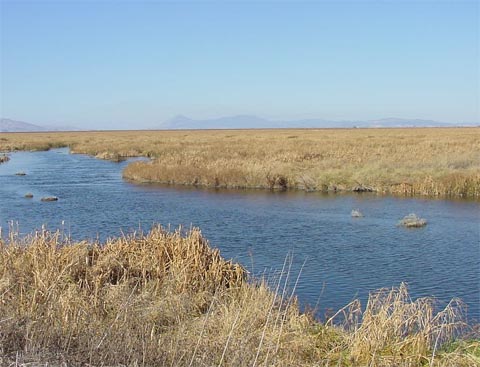Tule Lake National Wildlife Refuge
This project is part of a wetland/cropland rotation program being implemented on Tule Lake National Wildlife Refuge (NWR) to alleviate declines in both wildlife habitat values and agricultural productivity. The purpose of this program is to re-establish the ecological processes that historically created Tule Lake NWR's productive wetlands, while maintaining and enhancing economically viable and sustainable agriculture. The project restored 622 acres of seasonal wetlands within the leased agricultural lands on Lots 65 through 70 of Tule Lake NWR.
Levees were constructed and water control structures installed to manage the lands as seasonal wetlands for the first three years following construction. They are to be flooded yearround in the fourth year. Upon completion of the fourth year, the lands are designed to be returned to agricultural production and another block of land elsewhere on the refuge will be entered into the habitat-agricultural land rotation program.
 |
| Tule Lake NWR is one of the most important waterfowl areas in North America. |
During the 1950s and 1960s, Tule Lake NWR supported peak concentrations of more than 2.5 million ducks and 1 million geese and was considered the single most important waterfowl refuge in North America. The Kuchel Act of 1964 was enacted to preserve these waterfowl values and the local agricultural economy, which was dependent on refuge lands. However, perceived restrictions on wetlands management under the Kuchel Act eliminated the ecological processes critical to sustaining wetlands diversity and productivity. Currently, Tule Lake NWR supports only a fraction of its past waterfowl use. Species diversity has declined, and the refuge's value to endangered species has diminished. Agricultural production has also declined due to increases in soil-born pathogens and decreases in soil organic matter. The wetland/cropland rotation program is one of the management activities being implemented on Tule Lake NWR to improve both wildlife habitat and agricultural productivity.
Ducks Unlimited uses cookies to enhance your browsing experience, optimize site functionality, analyze traffic, and deliver personalized advertising through third parties. By continuing to use this site, you agree to our use of cookies. View Privacy Policy